Do you often see your buddy’s poop stuck halfway in their bum? It’s undoubtedly an awkward situation for your dog and something you and your dog might not feel great about.
Dogs often suffer from digestive problems that don’t allow the bowel to move appropriately. Eventually, some feces may get stuck in the dogs’ bums. This condition can indicate constipation. And it’s quite troublesome and uncomfortable for dogs. You need to help him get rid of the stuck poop quickly.
And yes, you are thinking right! You will need to get down and dirty to relieve your buddy from this unusual situation. If your dog cooperates, there are various ways to deal with this situation.
In this article, you will learn about the factors that cause a dog’s poop to get stuck halfway in its bums and effective ways to help your dog in such a situation. Keep on reading!
Why Does a Dog’s Poop Get Stuck?
A dog’s poop can get stuck in its bum for several reasons.
Removing the halfway-stuck poop from your dog wouldn’t be a nice experience for you and your dog. So you will want to prevent this awkward situation in the future. And for that, you will have to explore the possible causes behind it.
In the following sections of the article, we will explore all the possible reasons this happens.
Let’s dive right in.
1. Constipation
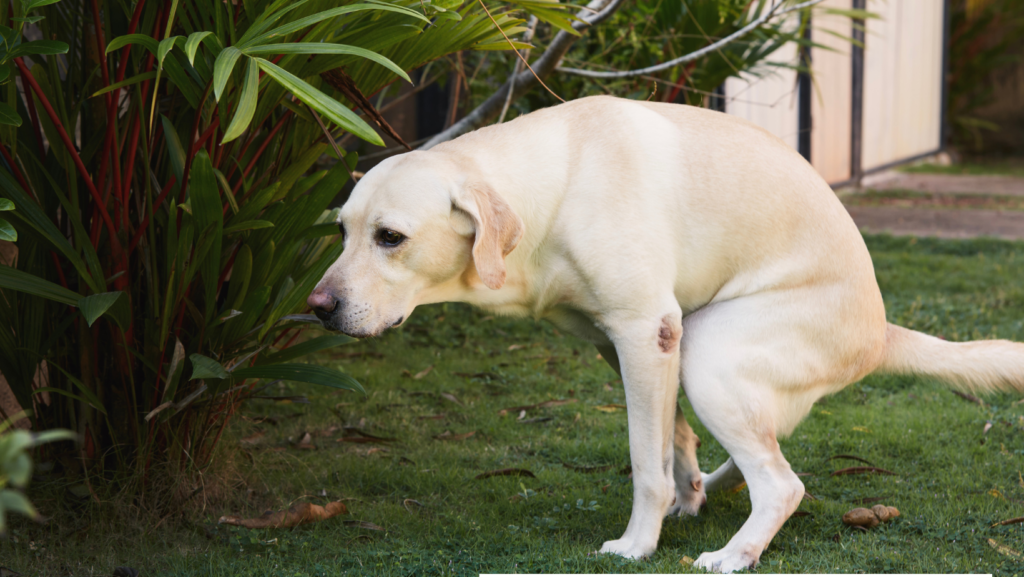
The main reason why a dog’s poop sticks halfway is constipation. This condition doesn’t allow dogs to poop properly on their regular poop schedule.
The fact is that the colon reabsorbs more water and electrolytes from the fecal matter. The fecal movement slows down along the digestive tract, causing constipation. And this absence of hydration or moisture turns the poop hard, making it hard to expel it.
Constipation is painful for dogs, as it makes it hard to defecate. The poop can get stuck halfway in the bum. So it’s essential to keep your dog well-hydrated to prevent constipation.
2. Dehydration
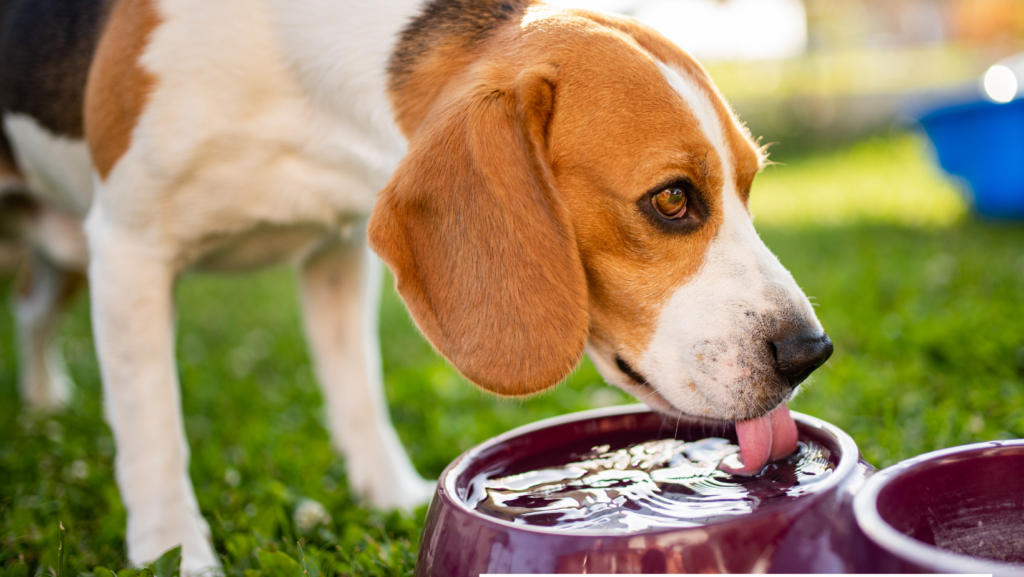
Your dog should get enough water to break down the ingested food. Insufficient water can slow down the digestion process and lead to hardened stools.
Your furry buddy will struggle hard to pass the hardened, compact poop and may eventually get stuck in the bum.
3. Pseudocoprostasis
The matted hair or fecal mass accumulates in the anal area and obstructs the anal opening. This condition is called pseudocoprostasis. The stool gets stuck more due to the matted mess, making it harder for the dog to defecate. Dogs with long fur are more vulnerable to this condition.
Pseudocoprostasis can occur if the soft stool isn’t cleaned properly. It gradually dries up and turns into matted hair in the anal area. So make sure to groom your dogs regularly.
Dogs with pseudocoprostasis can have a poor appetite and a foul odor because of intestinal parasites. Your dog would seem depressed, have bouts of vomiting, and more.
So make sure to maintain your dog’s hygiene. You must clean the area around its anal opening to remove fecal matter completely.
4. Non-edible Object Blockage
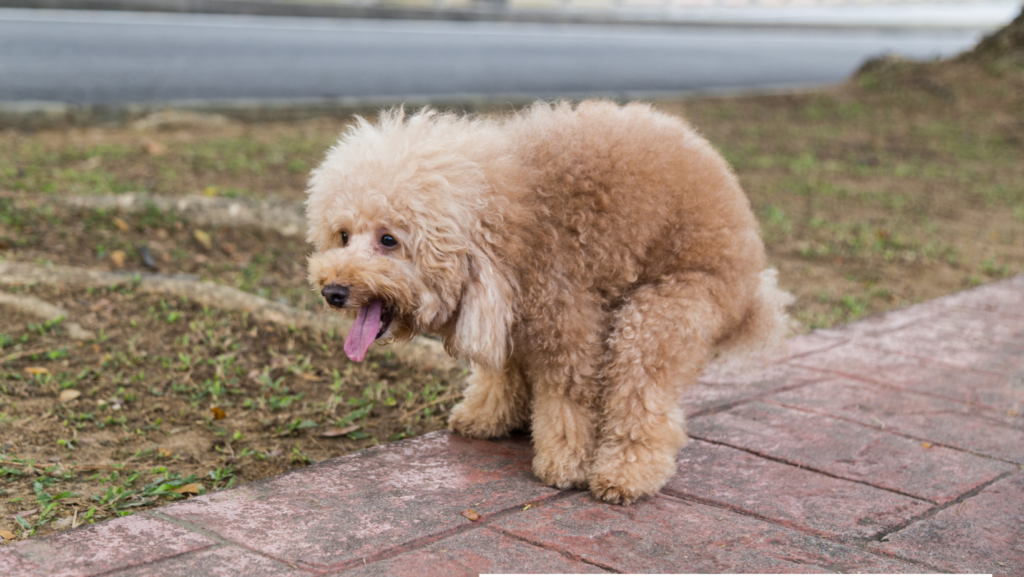
Dogs are rampant scavengers. They can eat anything, edible or non-edible, without any forethought. So your dog can eat objects like slippers, dry bones, and tree bark. However, ingesting these items may cause a blockage. In the worst cases, the non-edible object ingested can cause internal injuries if it’s sharp.
However, this condition manifests symptoms like constipation or obstipation. And your dog can suffer from extreme pain while expelling the poop.
If you suspect your dog has eaten such non-edible objects, talk to your vet immediately for the best advice.
5. Obstipation or Megacolon
If you don’t treat constipation in your dog on time, it can become chronic, causing obstipation or megacolon. While the fecal material hardens, it tends to block the colon.
Health conditions like intestinal obstructions, spinal problems, and some tumors can cause obstipation. Your buddy may lose weight, vomit, have bloody stools, or have difficulty pooping.
In the worst-case scenario, this condition can only be treated with surgery.
6. Other factors
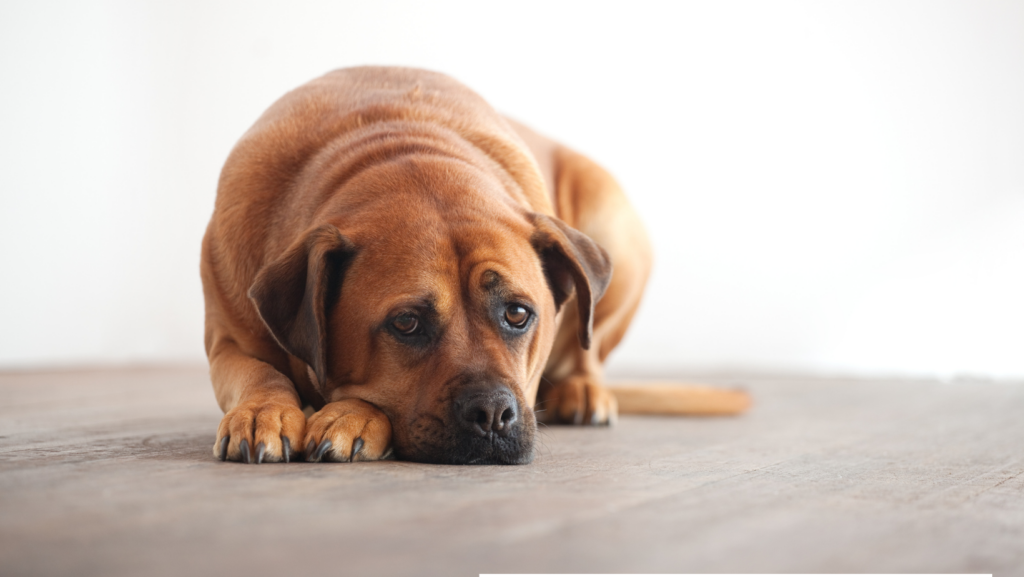
Insufficient fiber in your dog’s diet can also cause constipation. You should regularly provide adequate fiber to your buddy, as it will help with proper digestion.
Another factor that can weaken digestion is inadequate exercise or physical activity. So keep a note of how much exercise your dog gets every day.
However, dogs can suffer from hardened poop that usually gets stuck in their bum due to certain health issues like hernias or kidney disease. If you notice your buddy having difficulty pooping, take them to your vet for a checkup.
Can Your Dog’s Poop be Pulled Out From Bum?
Yeah. The stuck poop in the bum can be pulled out. It’s awkward for a dog to stay with poop stuck in its bum, so you must help your buddy out, no matter how filthy it may seem.
Remember that their anal area is sensitive. So you have to be gentle. Avoid pulling out the hanging stool roughly, as sometimes the poop stays attached to its digestive organ. So you can end up causing severe injury or bleeding to your buddy.
First, try to gently pull out any object that seems to be attached to the fecal matter. If it comes out smoothly, it’s fine. But if not, or if your buddy yelps during it, choose to cut it with scissors.
However, if your dog can’t expel the rest of the fecal mass, take them to the vet.
How to Remove Halfway Stuck Poop From Your Dog?
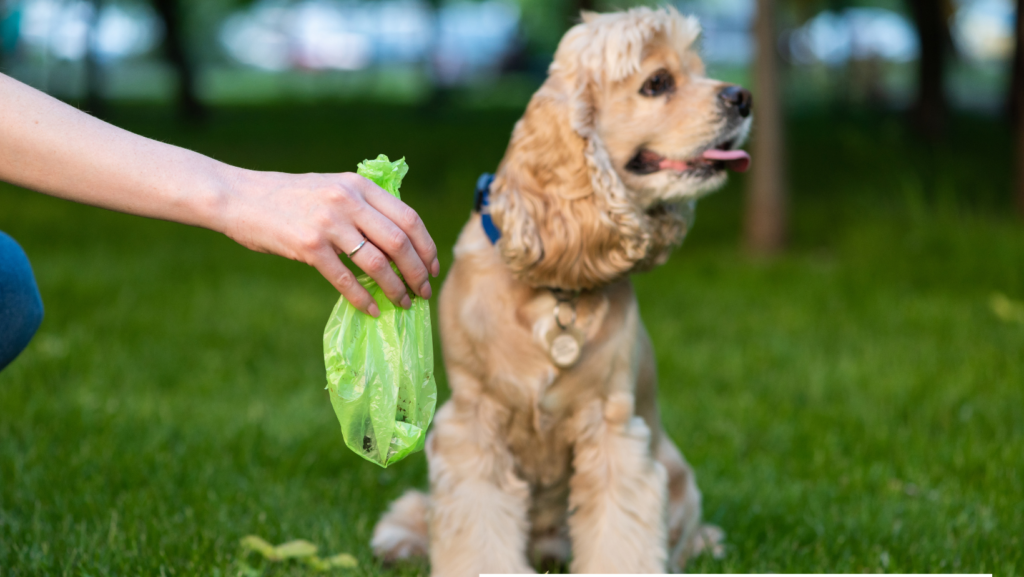
Fortunately, there are several ways to relieve your dog from such an awkward situation. Keep scrolling down to learn about them!
However, note that some of the methods mentioned are quite sensitive and require utmost care to execute. In addition, make sure to maintain hygiene as much as possible while executing any of these strategies.
Don’t fret if you see his bum swollen or sore after applying these methods. The condition may persist for the next few days. You can apply a cold pack to the swollen bum.
Use a face mask, gloves, and paper towels to remove the poop from your buddy’s bum to avoid infection.
1. The Pulling Technique
You first need a lubricant such as Aquaphor, petroleum jelly, Vaseline, or any other to eliminate the poop. But it’s always advisable to consult your vet about the best lubricant for your dog.
- Next, put the suitable lubricant gently on the surrounding areas of your canine’s anus.
- Then, try to pull the part of the poop that stuck generously from the anus.
- Does the fecal matter feel hard to pull? After attaining a good grip, pull out the stuck poop using your fingers a little gently and carefully.
- In case your buddy yells in pain, stop doing it.
Even you may not feel comfortable doing it. So it will be better to take your dog to the vet. Let them do it for you.
2. The Warm Bath Technique
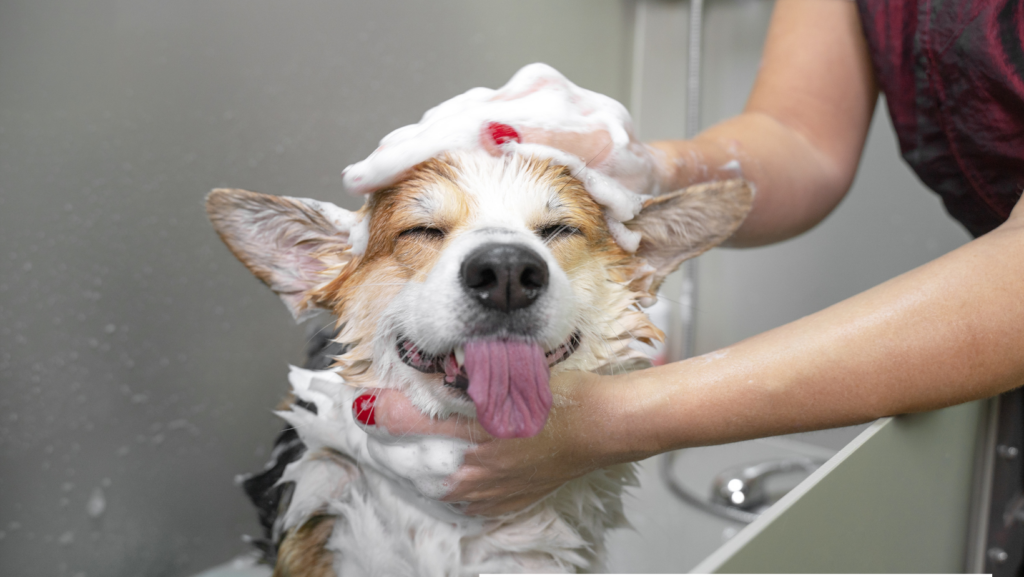
Does your furry buddy love to take a warm bath? Then, this might be the best strategy for you.
Put your dog in the warm water, and you will notice the poop getting soft and loose. You can wash and clean the fecal matter around the bum with dog shampoo. Once done, leave the area to dry entirely after the bath.
Moreover, it’s better to trim the fur surrounding the anal area to keep it clean.
3. The Bowel Express Technique
This technique stimulates the dog’s reflexes to help expel the poop properly. Follow the steps below to use this method:
- Use lubricant or Vaseline on the areas surrounding the anal opening.
- Then, grasp that area with your thumb, index, and middle fingers.
- You must now massage the place in a soft and outwardly motion to stimulate the pooping act.
- The lubricant applied will make the process smoother. And the outward motion will compel the rectal muscles to work harder.
You must repeat this motion up to six times, and the stuck poop will likely excrete fully.
4. The Finger Swab Technique
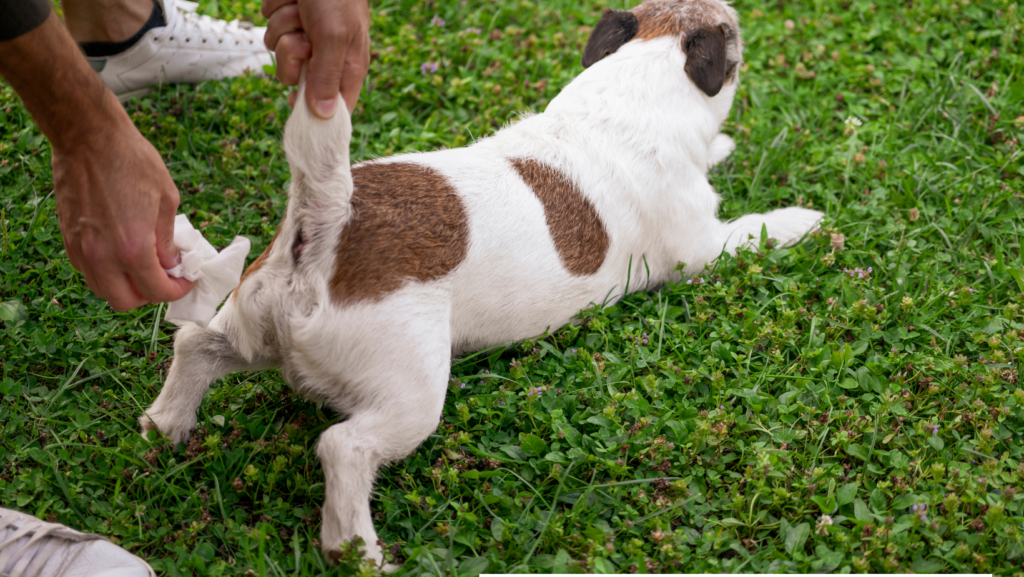
It’s a proven and more effective way to evoke fecal reflexes. The Finger Swab method works excellently, even in paralyzed dogs.
- Start the process by getting a cotton swab or wearing a glove.
- Then, apply the lubricant to one of its tips or on your little finger.
- Now gently insert your lubricated finger or the cotton swab’s tip inside your dog’s bum.
Your strong buddy is likely to expel the stuck poop after some time.
5. The Squeeze Technique
You can try this method too! Using your fingertips, you must apply a little force to a circular area around the butt. Feel whether there is a solid texture inside the rectum. If so, this blockage might be the reason for your dog’s difficulty pooping.
- Use your index finger and thumb to insert on either side of the rectum.
- Grasp the hard, compact stool.
- Then, try to break the hard mass by pinching it down firmly.
- While the anus opens automatically, you can squeeze out the poop.
However, ensure not to apply extreme pressure, which can injure the colon and rectum linings. Carry out the process until you remove all the hard poop stuck in your buddy’s buttocks.
How to Prevent Your Dog’s Poop From Getting Hard And Stuck?
Getting the poop stuck halfway in the bum can be uncomfortable for your furry buddy. Here are some ways to prevent this unpleasant situation from occurring.
1. Hydrate properly
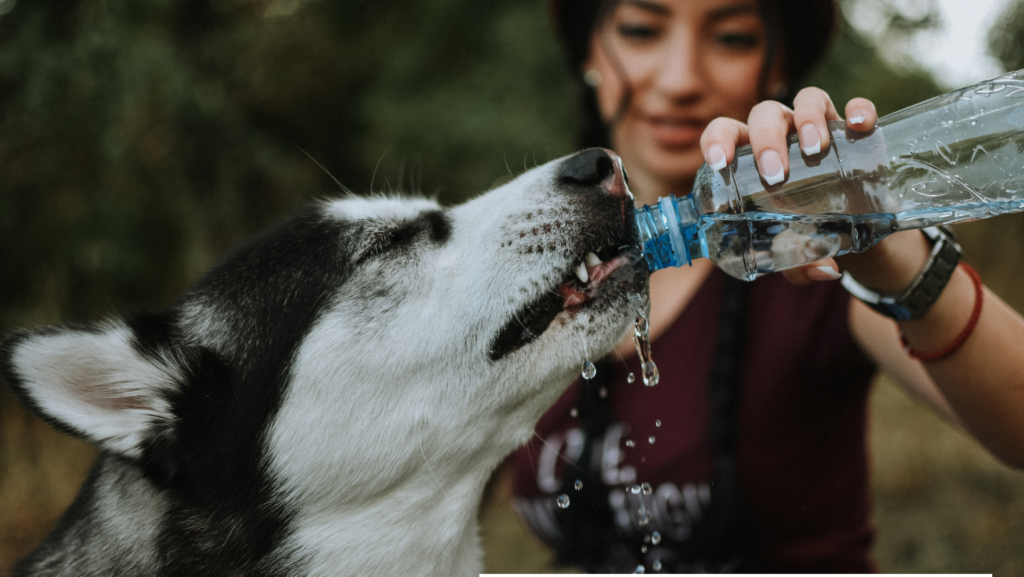
When a dog is well hydrated, it will help the digestive system to function smoothly. It, in turn, will prevent constipation and other health problems. So ensure your buddy drinks sufficient, clean, cool drinking water.
Giving a dog an ounce of water daily for each pound it weighs is recommended. However, dogs who don’t have the habit of drinking water can be fed chicken bone broth, collagen-rich beef, or rehydration drinks with no flavors. You can even offer them ice cubes to chew on.
2. Maintain a Fiber-Rich Diet
You must add fiber-rich foods to your buddy’s diet to encourage healthy and smooth bowel movements. You can give them carrots, potatoes, pumpkin, broccoli, and apples.
With sufficient fibrous foods, your dog will have a balanced meal that can prevent constipation. Fibers even prevent colon tumors that lead to obstipation and megacolon.
You can even use powdered fiber supplements along with natural fiber-rich food sources. However, consult with your vet about the best brand for your dog.
3. Use Mineral Oil
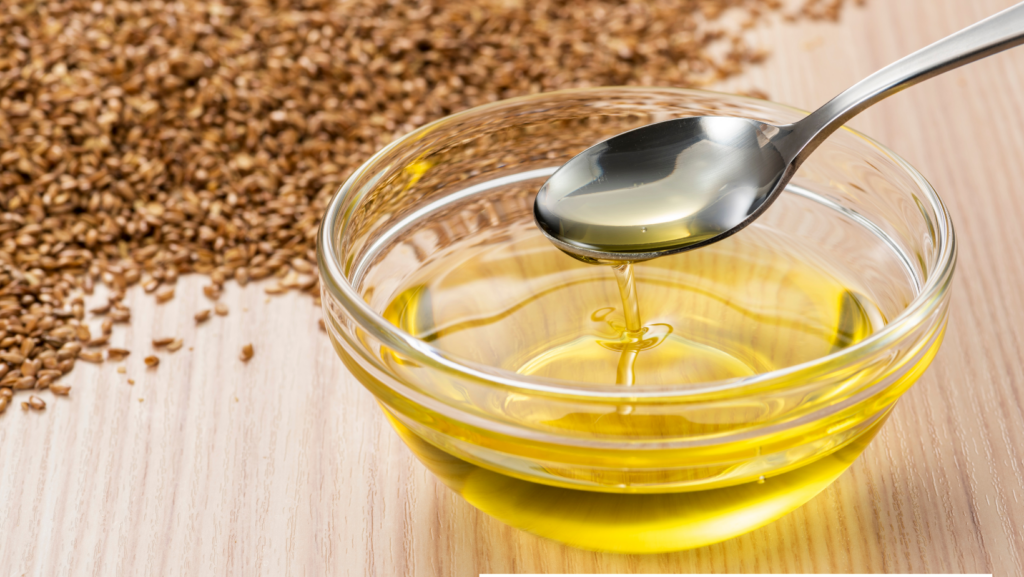
Another effective way to treat constipation in dogs is mineral oil. Choose a good brand based on your vet’s advice and give the right dosage.
However, mineral oils should be given only after mixing them with food. Mineral oils in itself can lead to aspiration pneumonia if directly inhaled.
FAQ’s
Ans: Your dog’s poop can get stuck on his bum for several reasons. However, the primary reason behind this condition is fecal impaction or constipation.
Ans: A hard stool stuck halfway out of the bum is a common sign of constipation. A proper diet, physical activity, and drinking water can help your dog pass a hard fecal mass.
Ans: You can remove a hard stool with a gloved, lubricated finger. Insert your finger into your dog’s rectum and try to break the hardened stool with a scissoring motion.
Conclusion
As a dog owner, you may face several unusual situations that must be dealt with coolly. Imagine seeing your dog’s poop stuck halfway in its butt. So it would help if you were ready for any uncomfortable scenarios.
Remember that this stubborn condition can make you and your dog uncomfortable. So you need to help your dog get rid of it by utilizing one of the techniques mentioned in this article.
However, no matter the technique you implement, you must wear gloves, use paper towels, and be extra careful when undertaking the task.
Meet Madison Phillips, your compassionate guide to pet well-being. With experience from VCA Animal Hospitals and Laxton Vet Clinics Bellaire Inc. Madison honed her skills and embraced the balance of medical expertise and compassion, through her articles, she simplifies pet care, whether you’re a newbie or an experienced pet parent.

